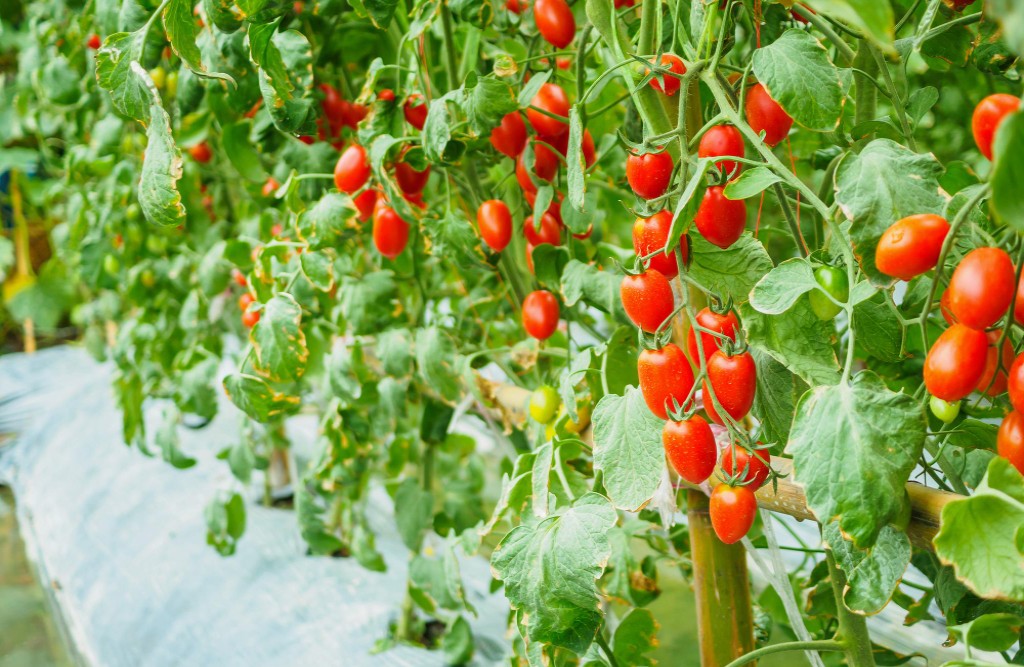
The tomato plant is hardy, either an annual or a short-lived perennial, characterized by robust, slate-green leaves with irregular serrations. It bears white flowers that eventually yield fruits in shades of red or yellow. This crop undergoes self-pollination. The principal states known for tomato cultivation are Maharashtra, Bihar, Karnataka, Uttar Pradesh, Odisha, Andhra Pradesh, Madhya Pradesh, and Assam.
Tomatoes can be cultivated in various soil types, ranging from sandy to heavy soils. Red loamy soil, with a pH level of 6-7, is considered ideal for tomato cultivation. Tomatoes thrive in warm weather conditions. Mulching aids in retaining moisture, while in greenhouse environments, high-quality tomatoes can be grown using drip irrigation for up to 12 months. The best color and quality of fruits are achieved at temperatures between 21-24°C. Temperatures exceeding 32°C have a detrimental effect on fruit production and growth. Tomato plants are intolerant to frost and excessive moisture, necessitating at least moderate rainfall. Temperatures below 10°C negatively impact the plant's tissues, slowing down physiological processes.
To prepare for field planting, tomato seeds are sown in nursery beds. These beds are typically 3x6 meters in size and have a height of 10-15 centimeters. A distance of around 70 centimeters is maintained between two beds to allow for easy irrigation and weeding. Spread well-decomposed manure and fine sand over the nursery beds to facilitate seed germination. Raised beds are essential in heavy soils to prevent water logging, while in sandy soils, beds without raised edges can be utilized for sowing.
After preparing the soil, trenches measuring 0.75 meters wide and carriageways ranging from 5 to 10 meters long and 15 to 20 centimeters high should be constructed as needed. Prior to planting, apply 5 kilograms of well-decomposed manure per carriageway, along with 40 grams of DAP, 10 grams of muriate of potash, and 5 grams of urea per square meter. Soak the seeds in a solution of 3 grams of Furadan and 10 grams of Thimet per liter of water, then distribute this mixture in the carriageways 3 to 4 days before planting to eliminate harmful pests. Ensure thorough mixing of good-quality well-decomposed manure (25 tons/hectare) during soil preparation.
Tomatoes are highly sensitive to water management. Light irrigation should be applied 3-4 days after the initial planting. The frequency of irrigation intervals should be determined based on soil type and rainfall, with intervals of 7-8 days during the monsoon season, 10-12 days during winter, and 5-6 days during summer. It is crucial to avoid water stress during the flowering and fruiting stages of tomatoes, as this period is critical for their development.
Improved Varieties: Hisar Arun Panjab Chuhara, Arka Vikas, Arka Saurabh, Kashi Amrit, Pant Tomato-3, Kalyanpur Type-3, Azad T-5, Azad T-6, Kashi, Pusa Early, Kashi Anupam,
Hybrid Varieties: Rashmi, Roopali, Ajanta Pusa Hybrid 2, Mangala, Vaishali, Maitri, Avinash-22, Swarna Vaibhav, Rishi
Planting and Yield of Tomato Crop: After plowing and leveling the field, evenly distribute well-rotted manure at a rate of 250-300 quintals per hectare and plow the field again for proper mixing. Before planting tomatoes, thoroughly eliminate any grass and weeds. Tomato seedlings are nurtured in nursery beds for 30-50 days before transplantation. Farmers typically transplant seedlings 3-6 weeks after the initial tomato planting. Tomato seedlings should be spaced 45-60 cm apart.
Yield per hectare varies significantly based on crop diversity and weather conditions. On average, production ranges from 20-25 tons per hectare. Hybrid varieties have the potential to yield up to approximately 50-60 tons per hectare.
Diseases and Management of Tomatoes: